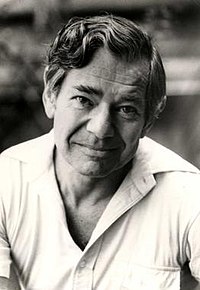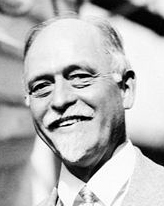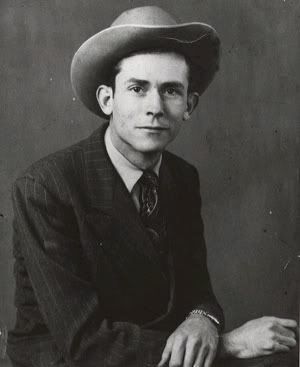
Working for investors, Lou Jarvis scouts foreclosed homes in Phoenix, a booming business. More Photos »
 Slide Show
Slide Show A Hot Market in Foreclosed Homes
PHOENIX — Every weekday morning, Lou Jarvis drives the sun-baked suburban streets looking for investment gold: a family that will lose its house in a foreclosure auction within a few hours.
If the property looks promising, Mr. Jarvis puts in a bid on behalf of any of his dozens of clients eager to become landlords. When he wins, he offers to let the family stay in the house and rent for much less than their mortgage payment.
With this sweltering desert city enduring one of the largest tumbles in housing prices for any urban area since the Depression, there is an unrelenting stream of foreclosures to choose from. On some days, hundreds are offered for sale at the auctions that take place on the plaza in front of the county courthouse.
There is also a large supply of foreclosed families who can no longer qualify for a loan. And that is prompting a flood of investors like Mr. Jarvis, who wants to turn as many of these people as possible into rent-paying tenants in the houses they used to own.
Real estate got just about everyone into trouble in Phoenix, and the thinking seems to be that real estate is going to get everyone out.
The low end of the real estate market here — and in some equally hard-hit places like inland California and coastal Florida — is becoming as wild as anything during the boom.
One real estate agent was showing a foreclosed house to a prospective client when a passer-by saw the open door, came in and snapped up the property. Another agent says she was having the lock changed on a bank-owned home when a man happened by, found out from the locksmith that it was available, and immediately bought it. Bidding wars are routine.
Absentee buyers, who can be either investors or individuals purchasing a vacation property, bought nearly 4 of every 10 homes sold in the Phoenix metropolitan area in April, according to the research firm MDA DataQuick. That is up 50 percent since late 2007, and is nearly the same ratio as at the 2005 peak.
Once again, just about everybody seems to be buying as many houses as they can, positive it will make them rich — or at least allow them to recoup some of their losses.
“I bought too high a few years ago,” said Jason Fischbeck, an entrepreneur who lives across the street from Mr. Jarvis and is one of his clients. “It cost $225,000. Now it’s worth $110,000. So I just paid $80,000 cash for another. ”
Mr. Jarvis, 47, the former co-owner of a wood moulding company that thrived in the boom and faltered in the crunch, also made some mistakes. Last spring, he contracted for three new homes in the distant suburb of Copper Basin, convinced that real estate was bottoming.
He was wrong. He managed to get out of two of the contracts but had to buy one of the houses, which is now substantially under water.
“You need to buy when there’s blood in the streets,” he said with a shrug. “Even if it’s your own blood.”
In January, Mr. Jarvis began working as director of investor relations for Brewer Caldwell, a property management firm that had been approached by the CBI Group, a real estate fund based in Calgary, Alberta. In its first foray into the American market, CBI is buying 175 rental houses in Phoenix.
One of them belonged to Mary Lou and Jorge Aguilar, who purchased it new for $111,000 in 1999. Three years ago, after a series of financial difficulties, they refinanced for $185,000 for reasons they no longer understand. “Our lender talked a pretty picture,” Mrs. Aguilar said bitterly.
When the couple’s mortgage payment adjusted to $1,242 a month, they fell behind and ended up in foreclosure. They now pay $1,014 in rent, which they say is bearable.
Still, their feelings are mixed. “It’s not our house anymore; it’s someone else’s,” said Mrs. Aguilar, who works for the state welfare department.
For CBI, the deal is sweet. At that rent, it would recoup the $52,000 it paid for the house in about five years. “This type of deal is absolutely not available in Canada,” said Jarrett Zielinski, a CBI executive. “No city here has fallen by 50 percent, the way Phoenix has.”
The investment group is opening a new fund this week to buy another 160 Phoenix homes.
As CBI continues to buy, it is planning investing seminars for its tenants. “Our goal is to be able to sell them their house back,” Mr. Zielinski said. “Wouldn’t that complete the circle?”
First up for Mr. Jarvis’s inspection on a recent morning is a three-bedroom on a cul-de-sac in the suburb of Gilbert. A rival investment crew is already there. “You don’t want this one,” one fellow says. “It’s no good.” Mr. Jarvis just laughs.
Once they are inside, the reason he is trying to send Mr. Jarvis away becomes clear. The house, built in 1991, is clean and well proportioned, with an opening bid of $76,000 — $200,000 less than what it sold for three years ago.
Not every property gets his nod. He considers an older condominium but deems it unlikely to appreciate. A three-bedroom seems promising until he sees the power lines looming just feet from the back fence.
In the end, he makes just one bid this day, for the three-bedroom he saw first. He offers $110,000, which is not enough. At the courthouse, it goes for $114,000. Every week, the foreclosure market is more competitive.
As the day’s auctions wind down, Mr. Jarvis goes back to the office to meet with a group that wants to put $5 million into the Phoenix housing market. A few miles away, the owner of that house with the monstrous power lines, Robert Corr, is being told his house was sold and he has five days to vacate.
Mr. Corr smiled when he heard the news, happy to be the latest of the 78,738 foreclosures in Phoenix since January 2005. He had already rented a van to take him and his family back to Alabama, where they would buy a mobile home and live on 10 acres of land.
Brewer Caldwell has bought about 125 houses this year for its clients. Only a quarter had owners who were living there already and willing to stay on as tenants. Filling up the rest, and all the other houses the company intends to buy, will depend on a steady supply of people who cannot afford to buy for themselves.
“If Phoenix loses population,” Mr. Jarvis says, “then buying houses here is a bad bet.”
As Mr. Jarvis scouts for houses, he sometimes finds a familiar one. In February, he saw a home that one of his brothers bought from a builder in 2005, camping out overnight for the opportunity. With its value now shrunk, the brother was letting it go to foreclosure.
Mr. Jarvis’s daughter Jade also bought a house at the market’s peak — in her case to live in. The other day she asked for advice: should she keep paying the mortgage on something that had declined in value by 60 percent? His conclusion: “probably not.”
“Am I teaching my kids right by letting them walk away from something they made a commitment to?” Mr. Jarvis wonders."








































No comments:
Post a Comment